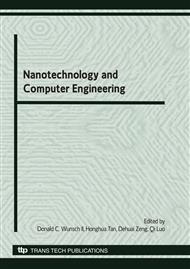p.58
p.64
p.69
p.74
p.80
p.87
p.93
p.97
p.103
Network Security Risk Assessment Method Research Based on Fuzzy Analytic Hierarchy Process
Abstract:
Aiming at the problem of complexity and uncertainty factors existing in network security risk assessment process, an analysis method based on Fuzzy Analytic Hierarchy Process is proposed in this paper. By the theory of fuzzy mathematic, this method establishes the network risk assessment model and constructs fuzzy judgment matrix to determine index weight of each level factor. The example of calculation results shows that the method is feasible and effective.
Info:
Periodical:
Pages:
80-86
Citation:
Online since:
June 2010
Authors:
Price:
Сopyright:
© 2010 Trans Tech Publications Ltd. All Rights Reserved
Share:
Citation:


